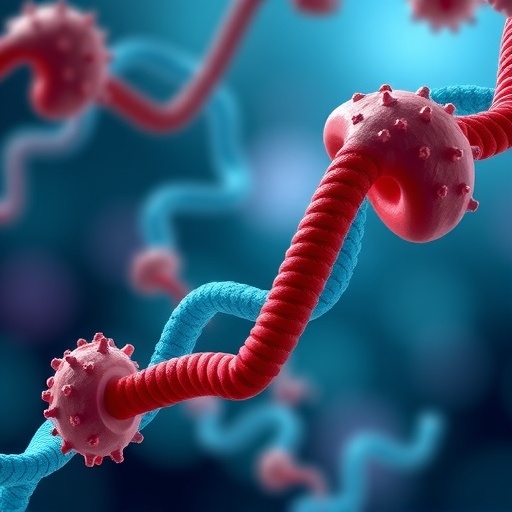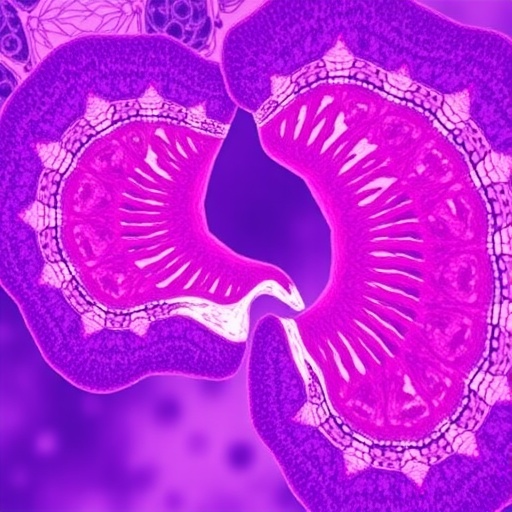A groundbreaking study published in BMC Cancer has unveiled critical insights into the disparities faced by elderly patients of African ancestry (AA) diagnosed with acute myeloid leukemia (AML). This research highlights a complex interplay between genomic instability and social determinants that contributes to poorer survival outcomes among this demographic, challenging the simplistic notion that ancestry alone is the primary driver of these disparities.
Acute myeloid leukemia is an aggressive hematologic malignancy characterized by the rapid proliferation of abnormal myeloid cells. Though advances in treatment have improved survival rates broadly, patients of African ancestry have persistently exhibited inferior outcomes. The recent cohort study comprised 396 patients, with a significant representation of 116 individuals of African ancestry, equating to nearly 29% of the group. Strikingly, the data revealed that those aged 60 and older in the AA subgroup had statistically poorer survival rates, with a significance value of p=0.008, underscoring the urgent need to dissect the underpinnings of this survival gap.
One of the most compelling genomic findings pertains to increased frequencies of chromosomal anomalies such as monosomy 7 and deletions affecting the 7q chromosome arm within the AA cohort. These genomic aberrations are emblematic of heightened genomic instability, a hallmark of aggressive AML biology. The loss of key tumor suppressor and chromatin regulation genes like EZH2, located on 7q, correlates with defective chromatin remodeling mechanisms. Similarly, the deletions implicate crucial DNA repair gene CUX1 and the anti-proliferative gene SAMD9L, together suggesting a compounded deficit in genomic maintenance and cellular proliferation control that may exacerbate disease aggressiveness.
The mechanistic foundations of this genomic instability may be multifactorial, implicating both inherited genetic predispositions and external environmental drivers. The authors hypothesize that accelerated biological aging processes, potentially induced by chronic environmental stressors, may potentiate the accrual of deleterious chromosomal errors. This theory aligns with a growing body of literature that links social stress and environmental adversity to cellular senescence and genomic impairments, therefore integrating biological and social dimensions in cancer pathobiology.
Intriguingly, analysis of socioeconomic parameters revealed that patients of African ancestry were disproportionately residing in neighborhoods characterized by higher levels of poverty, as measured by census tracts where more individuals live below 150% of the poverty threshold (p<0.01). This environmental vulnerability is associated with limited access to healthcare resources and increased exposure to chronic stress, factors known to influence disease course and treatment outcomes. It signifies that social determinants play a pivotal role alongside biological risk factors in shaping AML prognosis.
Therapeutic interventions also emerged as a critical modifiable factor in this landscape. The study found that African ancestry patients who underwent allogeneic hematopoietic cell transplantation (allo-HCT) experienced improved survival outcomes, suggesting that access to and optimization of this intensive treatment modality could mitigate some racial disparities in AML outcomes. Unfortunately, barriers to allo-HCT remain significant for minority patients, including disparities in donor availability, referral patterns, and socioeconomic constraints, underscoring the need for systemic improvements in equitable care delivery.
When subjected to multivariate statistical modeling, race itself did not remain an independent predictor of survival. Instead, adverse European LeukemiaNet 2022 (ELN22) risk classifications and higher socioeconomic vulnerability indices were robustly associated with inferior outcomes. This transformative finding reframes our understanding of health disparities in AML: it is the intersectionality of unfavorable biology and social adversity, rather than race per se, that orchestrates the survival disadvantage seen in elderly AA patients.
The implications of this study for clinical practice are profound. It argues for integrative patient assessments that encompass both genomic profiling and socio-environmental context to drive personalized therapeutic strategies. Additionally, addressing structural inequalities that hinder access to advanced therapies like allo-HCT is paramount for improving survival equity. Amplifying supportive care resources and community engagement in vulnerable populations could also mitigate some of the deleterious effects of socioeconomic hardship.
From a research perspective, these findings catalyze several future investigations. Delineating the molecular mechanisms by which chromosomal deletions such as monosomy 7 exacerbate leukemogenesis can uncover novel therapeutic targets. Moreover, expanding studies on how chronic environmental stress influences genomic integrity and cellular aging will enrich our understanding of cancer disparities. Importantly, prospective clinical trials designed with equitable enrollment and tailored interventions are needed to translate these discoveries into improved patient outcomes.
Furthermore, this study underscores the importance of comprehensive data collection in diverse populations. Inclusion of significant numbers of patients from minority backgrounds ensures that genomic and social risk factors unique to these groups are not overlooked. As precision medicine advances, genetic ancestry-aware diagnostic and prognostic tools will become integral to optimizing care for traditionally underrepresented populations.
The discovery of the synergistic effect of adverse ELN22 risk and socioeconomic vulnerability highlights the essential role of multidisciplinary care teams. Oncologists, hematologists, social workers, and community health advocates must collaborate to address both biological risk and social determinants simultaneously. This holistic approach can foster resilience and survival advantages even in high-risk elderly patients.
This research also invites a critical reevaluation of public health policies. Enhancing funding for cancer care infrastructure in socioeconomically disadvantaged areas and expanding donor registries to better represent diverse genetic backgrounds are pivotal strategies. Public health initiatives that reduce poverty-related stressors and improve health literacy could indirectly attenuate genomic instability associated with environmental adversity.
Converging evidence now supports the paradigm that health disparities in cancer are not rooted in immutable genetic factors linked strictly to ancestry, but rather in modifiable social and biological variables that intersect and amplify risk. This nuanced view facilitates a more compassionate and effective response to healthcare inequities, maximizing both scientific insight and social justice.
In conclusion, the study from Williams et al. provides a paradigm-shifting perspective on the multifactorial origins of poorer AML outcomes in elderly patients of African ancestry. By illuminating the intertwined genomic abnormalities and socioeconomic hardships, it sets the stage for interventions that transcend race, aiming instead at the underlying biological and social determinants that ultimately govern survival. These findings are a clarion call for integrated research, precision medicine, and equitable healthcare delivery to bridge longstanding gaps in cancer outcomes.
Subject of Research: Investigating the interplay of genomic alterations and social determinants contributing to inferior survival outcomes in elderly acute myeloid leukemia patients of African ancestry.
Article Title: Ancestry-associated social and genomic hallmarks linked with inferior outcome in elderly acute myeloid leukemia
Article References:
Williams, L.S., Williams, A., Wilkins, O. et al. Ancestry-associated social and genomic hallmarks linked with inferior outcome in elderly acute myeloid leukemia. BMC Cancer 25, 1654 (2025). https://doi.org/10.1186/s12885-025-14777-7
Image Credits: Scienmag.com
DOI: https://doi.org/10.1186/s12885-025-14777-7
Tags: acute myeloid leukemia research findingsAfrican ancestry AML disparitiescancer genomics and health equitychromosomal anomalies in AMLcohort study on AML survivalelderly acute myeloid leukemia outcomesgenomic instability in leukemiahematologic malignancies and ancestryminority health disparities in AMLsocial determinants of health in cancersurvival rates in elderly cancer patientstreatment outcomes for African ancestry patients





